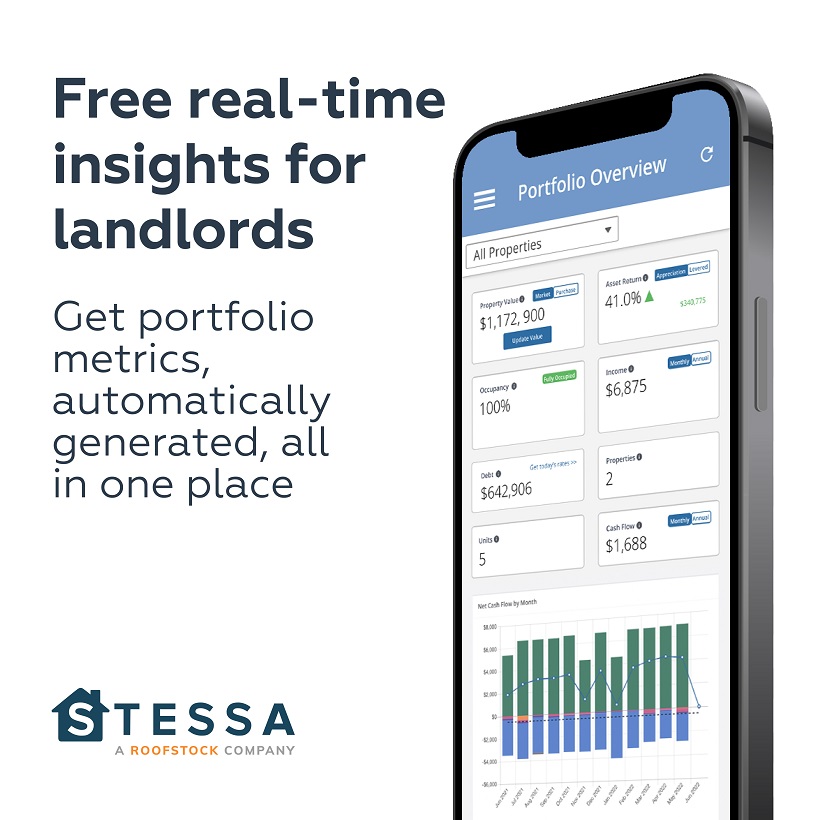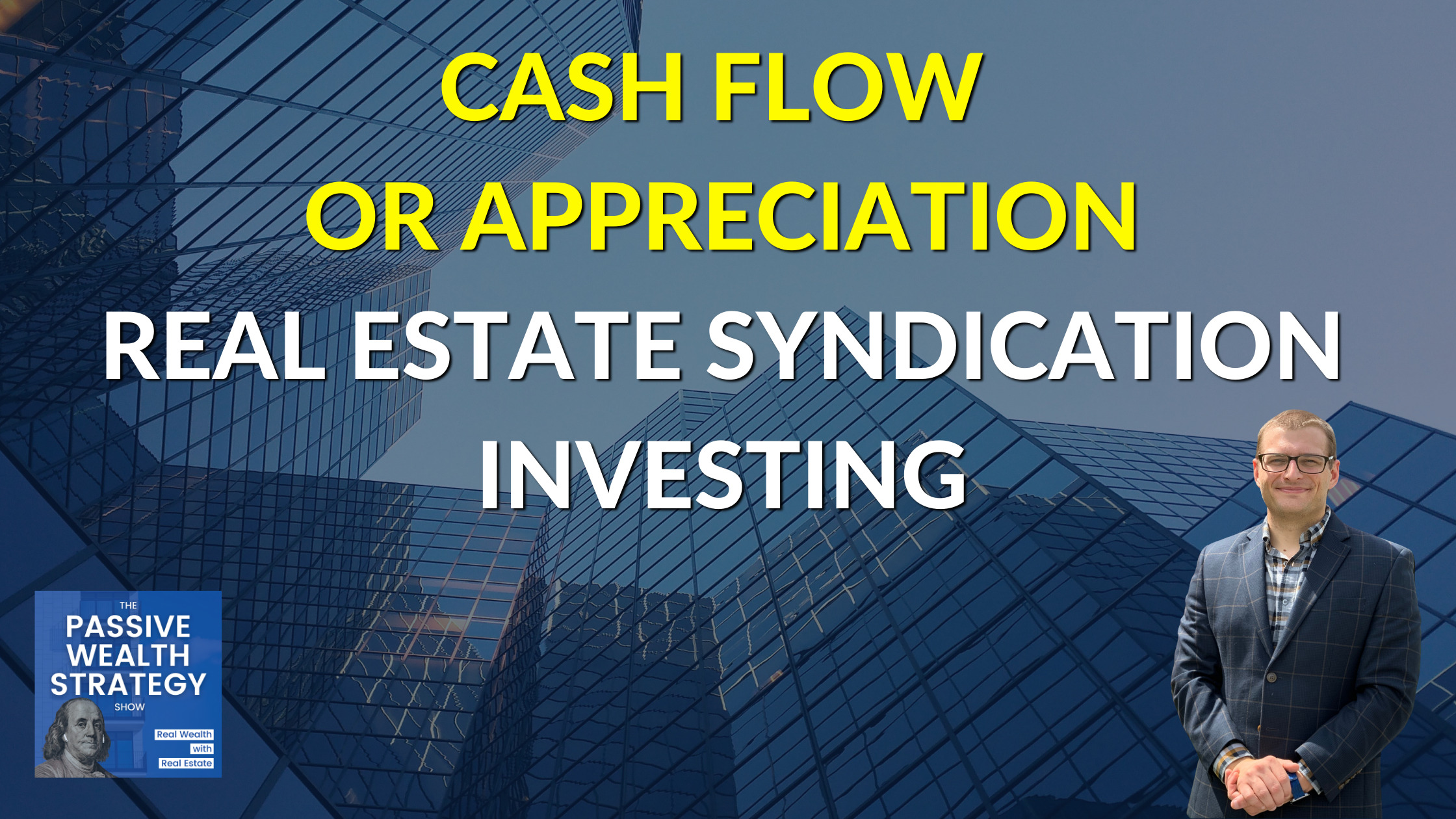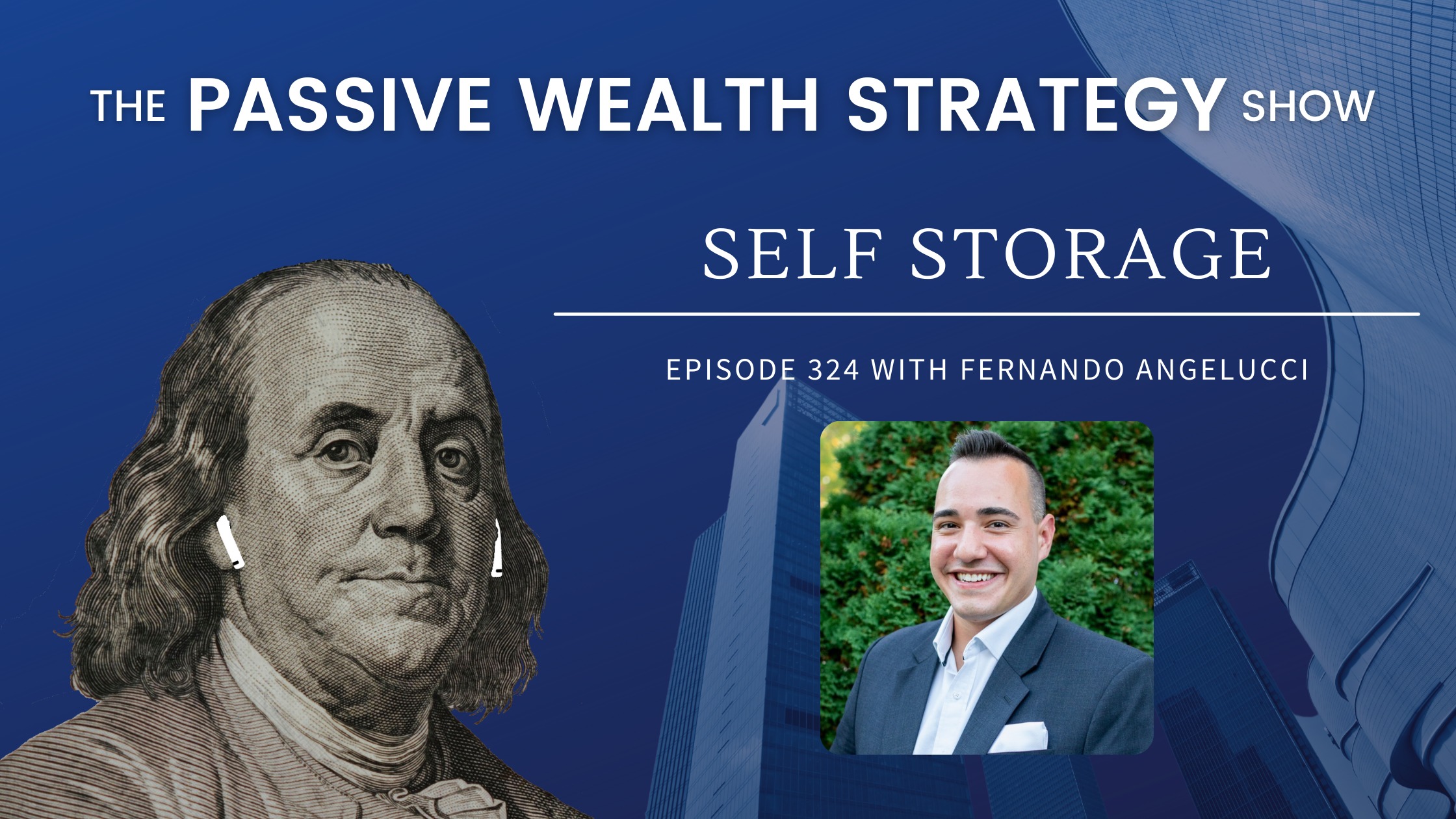
Self Storage with Fernando Angelucci
Fernando. Thank you for joining us. Thank you for coming back to the show. Yeah. Thanks for having me, Taylor, it’s been great talking with you so far. Little hour of the same mind on a lot of things, but for our listeners out there who don’t know about it, you don’t know who you are, maybe they missed the first time you were on the show.
Can you give us a little introduction about what you do in your business?
Yeah. So I’m a self-storage, syndicator, and developer who got into this space after getting tired of the residential and multifamily life. I’m the son of two immigrants who came to the United States with. The old school, American dream, which doesn’t really work out anymore.
Go get good grades, go get a job and work there for 40 years. The pension read rich dad, poor dad, and I was 16 and that changed my life. And then started investing in real estate at age 21. And here I am, I’m 30 years old now. And just broke over $75 million in self-storage under me.
That’s amazing, man. I mean that even within the real estate investing sphere, by doing all of that, especially by the time you’re 30, that’s got to put you in the 0.01% of real estate investors in terms of assets under management.
Yeah, with storage. It’s a little bit easier than say with houses or small apartment buildings.
Cause you know, a small storage facility is a million dollars, and then the ones that we build from the ground up to sell to REITs, those, we build for 10 to 12 million. Then we sell them for 18 to 25 million. So it skews the numbers a little bit.
But you know that also the numbers don’t lie.
And those numbers are quite big. And I want to bring you back on the show to get an update from you about how the pandemic has impacted your business either positively or negatively. I’m going to guess we’re going to hear positively because it’s been pretty good for real estate investors so far, but let’s dive into it and hear how things have gone as we approach.
Two years to stop the spread here.
Yeah, absolutely. I guess I will start with the negative side. So anytime there’s economic uncertainty, lenders immediately tighten up. So they start requiring much higher debt cover ratios. They start requiring higher down payment amounts. I believe the last large development deal that I was going out to get a loan that was affected by this was in.
June to September of 2020, and I was going out for a $9.6 million loan on a 140,000 square foot self-storage facility. So a lot of the banks, typically when we go out, really like self-storage. So we have a pretty good amount of lenders to choose from. And it was so interesting that literally all of our lenders dropped out except for one.
And that lender went from 85% loan to cost down to 80%, which is still really good. But I had to play. I had to keep my cards close to the vest and not let them know that he was my only option. Just don’t try to push back on those terms. That deal ended up turning out really well.
We broke ground in September of 2020. I actually am. I’m about to sell that project on around, 117% internal rate of the home.
Which is, not typical. I told my investors, it’s going to take five years and we’re going to sell it for 17.7 million. And here we are a year later selling it for 18. And I think the reason for that is these large REITs. So these large private equity firms that are typically our buyers for this type of product they’re sitting on a lot of cash and they see that a lot of cash has been pumped into the economy.
So that inflation, that loss of purchasing power of the dollar is going to really start hitting pretty hard. They usually say that inflation lags the end of an expanding money supply by 18 to 24 months. So once the Fed stops pumping money into the economy, we’ll have probably 18 to 24 months before. Interest rates and inflation catch up to that large amount of money supply.
So I think a lot of the REITs and the hedge funds realize this and are trying to convert their massive cash positions, which a lot of them have really massive cash positions into real estate, which is a hedge against inflation and also cash flows. So there, we’re getting offers right now.
Anywhere between 4% to five and a half percent cap rates, which is just absolutely ridiculous to me. So that’s yeah, exactly. It’s a sign of the times. So speaking on a broader level after that initial turbulence Coronavirus really affected the way the lenders saw the future.
No one, if you were to ask me when it was happening, that the self, not even self-storage, but the real estate market, in general, was gonna, double in value over the last two years. I would’ve said you’re crazy. But that’s how it ended up. What ended up happening. So just to give you some macro data around this, we like to follow Trepp, which is a T R E P P.
It’s a commercial mortgage-backed security research firm. So this is going to be your high-level debt. Typically non-recourse it’s longer-term, typically a 10-year balloon on a 30 year am. This is the end all be all when it comes to refinancing large commercial portfolios. So in the first three-quarters of the pandemic fully raging, once everything started shutting down, there were 1700 CMBS loans made to self-storage.
And during that, those first three quarters after the shutdown, only three of those 1700 loans were more than 30 days delinquent. So that is a delinquency rate of 0.17%. While at that same time, multifamily was defaulting at a rate of 1800% or 18 times out of storage. And office and medical we’re defaulting at a rate of 84 to a hundred times that of self-storage.
Was really good, really blessed to be in this space as it, I’ve been taught in this for a long time and even said on the last time I came on, self-storage is known as a recession-resistant asset. It does really well when the economy is not doing well because more people are in transition.
And that’s typically who they are. The clientele is people that are moving jobs, moving houses, downsizing, upsizing, you know what.
I really appreciate that. I think you use the appropriate language there. It said recession-resistant rather than recession-proof. I think sometimes we see folks in this space pitch, any asset self-storage mobile home parks.
I don’t care what, as some kind of recession-proof thing, which is absolutely ridiculous. Nothing is recession-proof, right? If we have positive dynamics that can make us maybe a little more recession-resistant, Hey, that’s great. But it’s just insane too, we hear folks say such, and such is recession-proof, which is just, it’s not possible.
Nothing works that way.
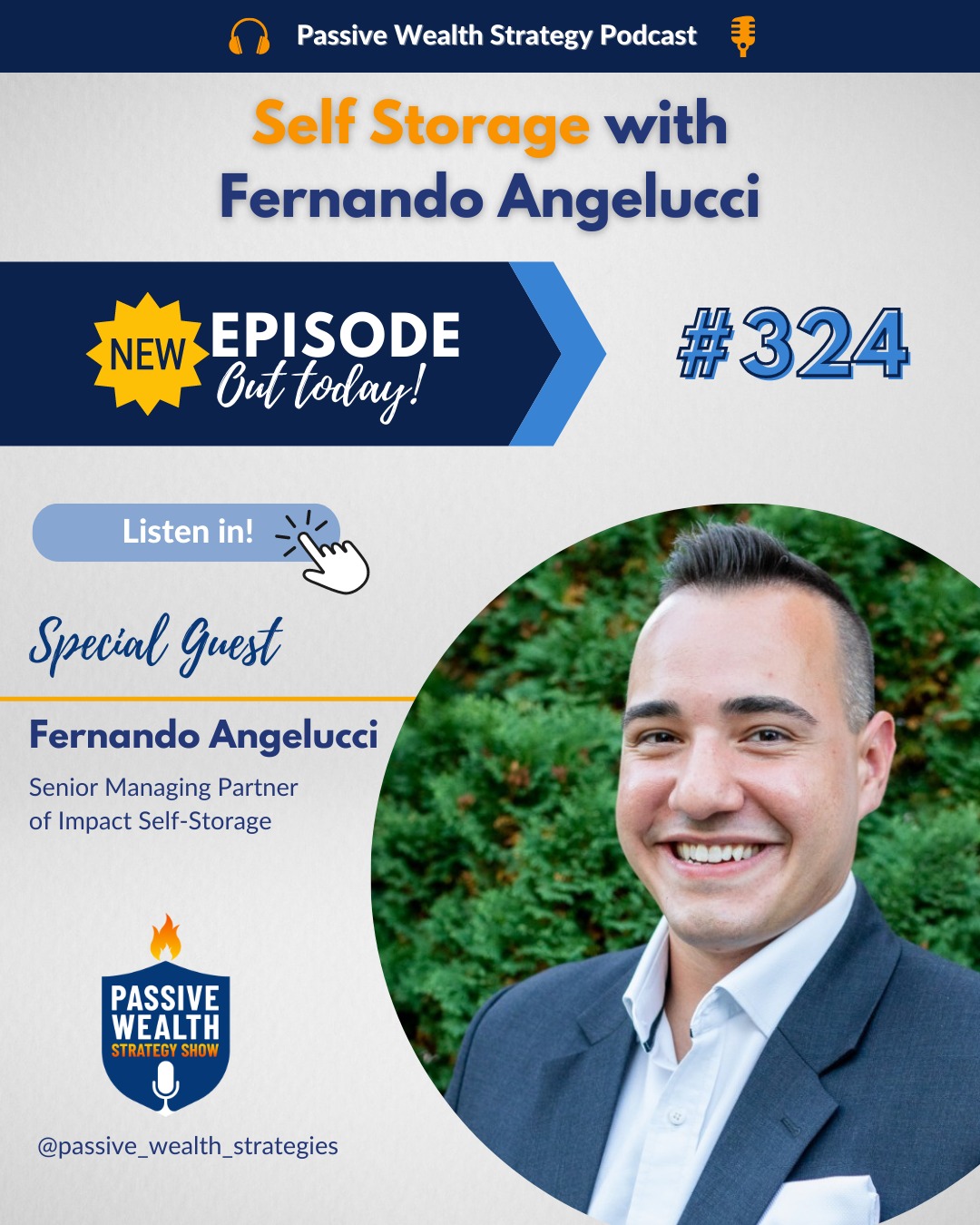
Self Storage with Fernando Angelucci
That’s exactly what we were seeing. And as far as across the board, on our actual properties, the ones that we own and operate for a brief moment, we did see a dip in. Collections. It was very slight, maybe two to 3% across our entire portfolio, but we were very.
Active and try to stay in front of it. So we called all of our tenants. We said, Hey, is there anything we can do to help out? Do you need us to maybe cut the payments in half? And then you could pay the rest off once you get on your feet? So he put payment plans in place and we very quickly came back up and then very quickly after.
The initial shock, if you will, hit the economy. All of a sudden our street rates started going up. Our occupancy rates broke above historic ceilings, which was very interesting. We try to keep our properties at. 89 to 92% occupancy, because if we’re below that, we’re either charging too much or we’re not doing enough marketing.
If we’re above that, we’re not charging enough. What we found is that if we float in that 90% occupancy range, our NOI or net operating income is actually higher than if we were at a hundred percent stabilization. But even with. In some of the markets we were in, we were raising rates. We were going above that 92% occupancy, which triggers an automatic rent raise across our facilities.
And we were doing rent raises like every four to six months and people just kept renting. We couldn’t get our occupancy down to 92%. So in some markets, we were at like 125% of market rate, 140% of the rate. It was at least what I thought the market rate was. It was crazy. Yeah. But again, like I said, very blessed to have chosen this.
Asset class. And luckily was able to get out a lot of my single-family rentals a couple of years ago. So I didn’t have to deal with that side of the world.
Absolutely. So you mentioned new development building, building new properties, and that’s been successful for you. Some of the risks that I think we’ve seen maybe exposed in that way.
Materials prices because we’re talking about inflation here and the availability of trade labor has been difficult. And can you tell us about your experience there? Because you’ve, based on what you’re saying, it sounds like you’ve navigated those waters, that is one of the risks in developing new real estate.
Yeah, absolutely. So let’s take a step back. The reason I started developing self-storage is that. Kind of Allah, Sam Zell. If you can’t buy a property below replacement costs, then your only other option is to build it. I don’t care what the cap rate is. I don’t care what the cash on cash return is.
If I’m paying for an asset and I’m paying well overpaying what the replacement cost is, I can do better somewhere else. What happened is because of all this compressing of the cap rate and the storage space, especially once you get to larger sized properties, 65,000 plus square feet or 80,000 plus square feet, all of a sudden I’m competing against these REITs, which were typically my buyers and they’re coming in with 4%, five and a half percent cap rate, depending on the type of build and the size and.
For that type of rate, I’d rather just put my money in the stock market and not have to work at all. So we shifted over to developing these deals, not only to keep them but to sell them off as well. And you’re right. We got hit pretty hard with the materials prices, self-storage, primarily steel, and concrete.
Our steel prices went up like 300, 400% at their peak. It started to come down a little bit, but it’s still way higher than it was before. Global supply chain shortages. So that was really tough. So I’m an engineer by training and, thank God. I was trained that way because I always plan. Plan for the worst-case scenario and hope for the best.
So we were putting in before the pandemic even hit, we were putting in 30 to 40% contingencies on our materials pricing. So that helped buffer a little bit. And in areas where the costs really shot up fast, we had to then look at our plans and change them around. Produce the same amount of square footage, but maybe not as many amenities as we’d really want to cut down on that construction cost.
So that was one piece. Now, today we are, we’re putting in 50% contingencies because it still, we’re seeing pricing go up every month. If you will, on construction costs, making some projects that we thought were viable in the past, no longer viable. On the labor side, it’s been extremely difficult.
Working with our GCs, seeing how they build their pipeline of subcontractors requiring that they sign with two or three additional subcontractors in the case the first walk off the job, which has happened to us on a few projects where the. We start paying the sub. They do 30, 40%.
And then all of a sudden we just, we can’t find them. They don’t show up so they scramble to find somebody else. On the commercial side. It’s a little bit easier because you’re dealing with a, I don’t want to say higher quality, but it’s a little bit more professional level of labor, as opposed to when you’re dealing with smaller single-family and multi-family construction.
Just because the rates are a little bit higher, the projects are a little bit larger, so it’s easier for them to come in. For me to build a ground-up self-storage facility, that’s a 12-month project for me to build a BA build a house-ground up. That’s like us. Maybe a three to the six-month project, depending on what type of house.
But that’s been another struggle. Everyone, I talked to every general contractor, every developer, labor’s a huge issue right now. And honestly, I think the only option is just to start paying them more with less when the same amount of capital. Eating for less labor, just supply and demand metrics, state that the price to the laborers needs to go up.
So once we realize that, we don’t get mad about our quotes getting up. That’s why we build in these contingencies. My biggest thing is time. I don’t really care about the price because the time is what’s more expensive. On these big developments. If I have a $10 million construction loan, I’m paying anywhere between 30 to 50 grand a month in interest.
So if you’re telling me I have to pay an extra 30 or 50 grand to get some subs that will finish a job in two or three months. Faster than me trying to scramble to get somebody that’s willing to do it at the old price that was quoted to me. It just doesn’t make sense. Not only that. So that’s one side, which is the debt side, but then the equity side as well.
I have these investors where I give them an IRR target and I raise money based on that target. So IRR is a net present value calculation of cash on cash return, which means the faster I get money back to my investors, the higher their IRR is. So I am more time-sensitive than I am. Capital sensitive when it comes to these projects and I will pay for time if I can pay for time, I will pay for time.
Oh, I’m glad that you put that in perspective with say the cost of debt and also brought up the IRR calculation because of those delays. Reduce your IRR and reduce your ability to redeploy that capital into other opportunities when they exit, even if it’s a month or two delays still impact your return in an IRR sense.
Exactly. Yeah. Interesting. Okay. We’ve talked about some of the risks or maybe the, I would say downsides, but the downsides of what’s happened in the pandemic. How about the upside? What’s the good news?
Yeah. There are buyers everywhere and they’re paying insane prices for assets that I would.
Pay that much amount of money for it. So I, everyone in my office knows, I always have a saying, if somebody makes me an offer on one of my properties and I am not willing to pay that amount for my property, you’re defacto make isn’t making a purchase decision, right? So if you’re not willing to buy your own asset at that new quoted price, you are now a seller.
And I have. It’s fun. I usually tell people I’m more of a cash flow guy, but recently I’ve been a seller more than not some perfect examples. I know we were talking about this prior to recording, but I had a development project. It was a 10 and a half million dollar build. Told my investors would set.
We’ll sell it in five years for 17.7 million. In month 13, I got $18 million. So the project literally isn’t even done being built yet. It’s two weeks away from the certificate of occupancy and someone’s going to offer me higher than my hundred percent state or 90% stabilized price. I’m going to take it.
I have a that’s my class stuff. And I thought, okay, maybe it’s only the class, a market because all these people have a ton of money and the rates and headphones, equity, private equity, what have you. But Two weeks ago, I had someone come and say, Hey, I want to buy your entire class seat portfolio, all the mom and pop cash flowing deals.
And I said, okay, I honestly wouldn’t be a seller if it, if the offer’s going to be below 7% cap rate. And he’s like, how about five? And I was like, I’m a seller at 5% all day. I will sell literally everything I own. Now the problem is. Now I’m sitting on a bunch of cash that is very quickly inflation.
Where do I put that cash? So that’s another problem that comes along. It’s a good problem, but it’s a problem, nonetheless, that comes with it. So one of the pros prices is through the. For on-market properties, I’m going to make that caveat for on-market properties. Cause I am still, we have a pretty robust marketing pipeline.
I always joke around that. I don’t have a real estate company. I have a marketing company, we spend probably close to $150,000 a year just on direct mail to self-storage sellers. And when we get there. Directly without a broker in between us, we were still able to buy these deals at anywhere between seven to 10% cap rate.
I’m closing on one in about two weeks, you said 11.2%. And it’s just because you’re finding, what’s the word I’m looking for? It’s a. It’s a, it’s not a perfect market, as the stock market, right? It’s there, there can be massive swings and arbitrage opportunities, but on the on-market side, prices are just through the roof.
I’ve never seen anything like this. Another really good pro on this side is lenders. So because of. COVID affects certain asset classes. Now you have a lot of lenders where their portfolios are looking pretty bad and they have a lot of bad debt in a certain concentration. So what they’re trying to do is balance out that portfolio and what we’ve been finding, especially in the non-recourse markets.
Hi, I’m a big appetite for self-storage. So for example working with a Morgan Stanley rep on the non-recourse side, he’s willing to cash out my deals. Give me 10 years on a balloon, all interest only on a 30 year. 30-year amortization. It is non-recourse that, depending on the size of the loan, the interest rate is anywhere between 2.6% or 4% interest.
And typically on the non-recourse side, the lenders want to see a 12-month seasoning. So you hit stabilization. Then they want you to hold it for another 12 months to prove that it truly is stabilized. Right now, I’m getting offers from lenders that are willing to look at T3 financials. So only three months.
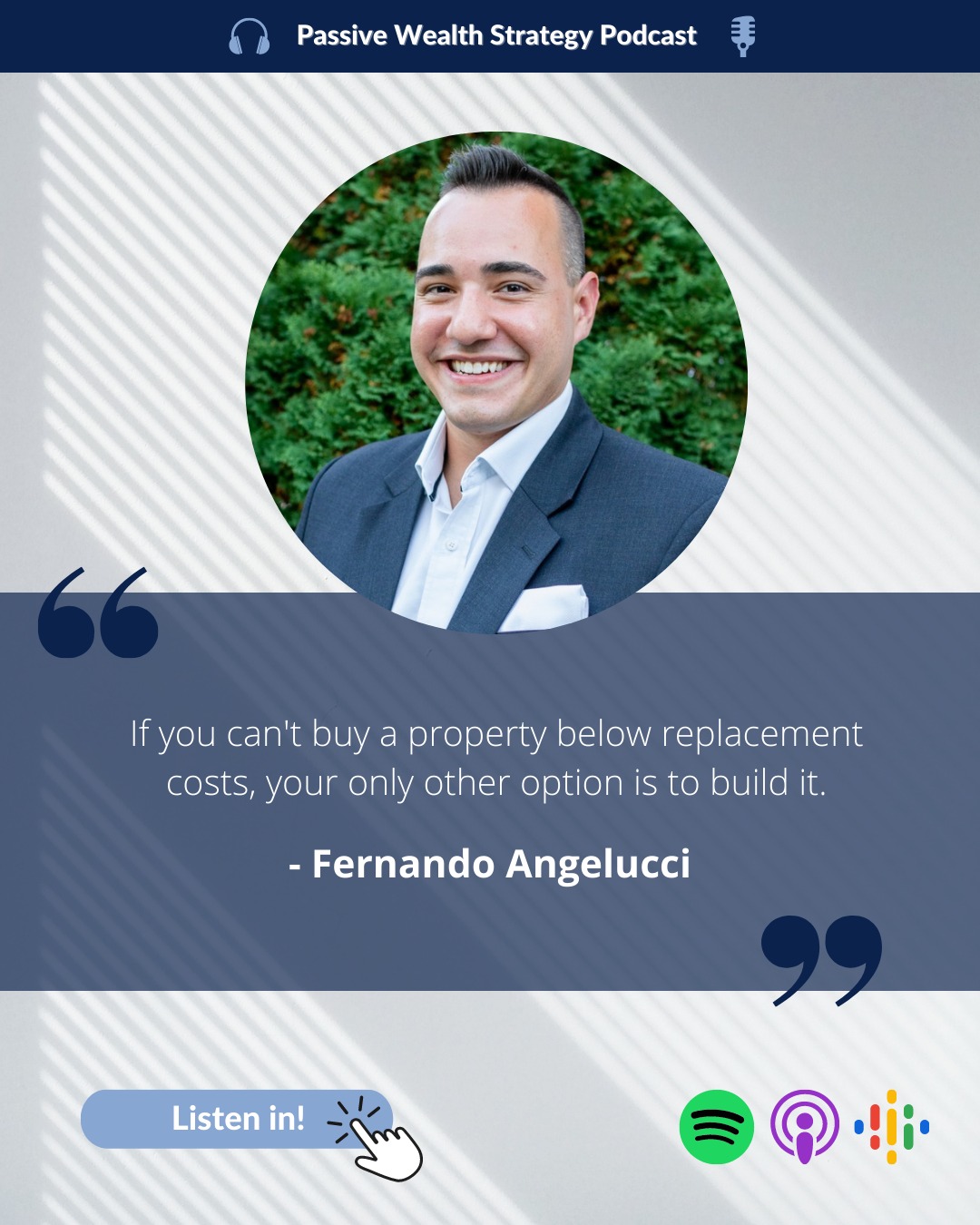
If you can't buy a property below replacement costs, your only other option is to build it.
Fernando Angelucci Tweet
It’s stable. I have one lender that’s willing to say, once you get to that, we’ll use one month’s worth of financials, extrapolate out your stabilized value is just absurd, right? Yeah. Understanding at a base level macroeconomics, I understand we have inflation coming down the pipeline, which means asset values are gonna be.
Interest rates are also going to go up. So if I can lock in a non-recourse interest rate at that low for 10 years, and then have to worry about refinancing 10 years from now, when my asset most likely would be worth twice or three times what I’m willing to, what I could sell it for, then that’s a good problem to have.
And so what I’m trying to do right now is by his much. Property as I can stabilize it as fast as I can, and then move it to fixed-rate debt for as long a period as possible. So that’s on the non-recourse side. If you’re willing to go recourse, there are even better options for long-term loans, primarily through the SBA, the small business administration, self-storage, not only is it real estate but it’s also considered a business and the SBA right now they are giving us 25 year fully amortized loans.
Most of them are wanting to get some type of adjustment because it is a long period to hold the loan. So I’ve been able to negotiate an adjustment on the rate every five years. It is recourse, but the leverage is fantastic. So on the non-recourse side, you can get up to 65 to 75% loan to value on the SBA side.
They’ll give you up to 90%. Wow. And right now they’re waving the SBA guarantee fee, which is usually about 3% of the loan amount. So really good debt options out there. SBA is a really good avenue. If you have a smaller facility, typically the non-recourse lenders want a minimum loan size of around $5 million.
So if you’re just a one-off investor in your buy one or two facilities, Yeah, stabilization is worth a million or 2 million bucks. You’re not really ready to go to the non-rich core side unless you can portfolio of. Few facilities together to get that aggregate loan amount up to that $5 million rates.
So that’s been a second pro of this whole pandemic is just the lenders readjusting their portfolios to give us, and that’s how lenders do it, for them to entice people, to get an asset class they want, they have to give really good terms for that.
That’s awesome for the investors. What’s you mentioned a couple of times the square footage of facilities in different contexts, but like what square footage is, are you looking at?
Like how, what kind of a facility would just be too small to
even think about it. Yeah. So we have a couple of different avenues in our company. So we’ll look at almost every type of self-storage facility that is above 10,000 square feet because we have buyers that rely on us to find them because of our marketing company.
So we’ll wholesale out deals in the 10 to 30,000 net rentable square foot range to other investors from 30,000 square feet. And up, we are now buyers. And typically what we look to do is buy value, add deals that have. 35,000 square feet at a minimum that we can get up to 60 to 65,000 square feet with an expansion play, and then aggregate those into larger portfolios of five to 10 properties, and then move them off to the non-recourse market.
As soon as you start tipping over about 65,000 square feet. It’s very difficult for me to be a buyer because now I’m competing with the rates and now cap rates dropped literally three, 400 basis points. I just can’t compete. So above 65 ish thousand square feet, then I’m a builder. So then I’m looking for land.
I’m looking for conversion opportunities that have been really good during the pandemic. So a lot of these big-box retail stores went out of business, leaving. Beautiful envelopes, right? 110,000. Here’s the deal I’m doing right now? It’s 110,000 square foot Sears building Sears as a company did a very good job of doing maintenance, preventative maintenance on their buildings.
I’m buying this building for $9 a school. Bri pandemic, I would have had to probably pay 50, 60 bucks afoot for this building. So that allows me to build an asset that is the same size as a ground-up build. I cut the build time in half and I cut the construction cost by about a third. So that’s another way I’ve been mitigating.
The rising cost of construction materials is by buying a shell that’s already there already has all the mechanical, electrical, and plumbing that I need. And then just building out the lockers.
That’s incredible. I worked at a Sears in high school and I’m in my thirties now. So that was a long time ago.
But even at that time, I was thinking, man, this company is doomed and I’m really glad to see that at least the properties are being repurposed and put to another use productive use because at big box retail is no matter what company it just does not have a great future really is, in most markets.
So I’m glad to hear that’s being repurposed.
Yeah, we’ve been, we really like to see buildings. They trade at somewhat of a premium. This was just a fluke deal that we got so cheap because of the condition, the other ones that we really like are the mid-range ones are the Walmarts. So typically the Walmart model is you set up one Walmart here and then two or three times over you set up another Walmart.
And once both of those do really well, they shut both of them down and then set up a super Walmart in between. Really? I did not know that. Yeah. So that’s their main model. That’s how they test out if a super Walmart will make sense. So what they’ll do is they’ll shut down those two remainings. Walmart’s the first ones that we’re testing the markets, and then we can go pick those up.
And the Walmarts are like mid-tier as far as like the quality that the building is in once you buy them. But because they grow so fast and they put these things up so fast, they’re usually not that old. So I have a Walmart conversion down in Texas and I’m working on it. And then, I, the lowest of the lowest, is dealing with kind of the super discount stores.
We come across a lot of Kmarts and I’ve actually turned down quite a few because the building was listed. Falling apart. The cost to repair it was almost the same cost as me putting up a new shell. So I very rarely will transact on those types of deals. Those are more discount-style stores.
But yeah, the adaptive reuse, when we first started looking at this maybe six months prior to the pandemic breaking out, I was like, oh, this seems pretty good. But at the time I was looking at maybe 50, 60 bucks afoot, it wasn’t really helping. I was basically still at the same price of doing a ground-up build, but then as soon as the pandemic hit and those prices got slashed by Four-fifths.
I’m like, okay, now I’m a, I’m an adaptive reuse
with fortune favors, the prepared, right? That’s one of the best things out there. I love it, it sounds like things are going really well. Right now. We’re going to take a quick break for our sponsor. Our Fernando, I got three questions. I ask every guest on the show, but you’ve been on the show before you’ve answered those questions and already got three new ones for our returning guests.
Are you ready to go? Let’s do it. All right. Great. First one. What is your favorite book to read for personal reasons?
Yeah, I, it is a hard question to answer because I’m a voracious reader. I go through maybe one to three books a week, but one recently that I’ve loved is Tools of Titans by Tim Ferriss. I love the model because he basically.
Interviews experts in their field distill the information down to two to five pages. So it’s easy to pick up, read through one or two experts, put down, and walk away with a lot of actionable items. And then you can come back a day later and read another aspect and implement that. So recently that has been one of my favorites.
Nice.
Okay. So we had your favorite personal book. How about the second question? What is your favorite book to read for business purposes? What’s your favorite business?
Yeah. So recently I’ve been really fascinated with biographies of real estate moguls. As well as looking at macroeconomic trends, because we are in a huge transitionary period in the United States from a macroeconomic standpoint.
So I’m going to cheat here. I’m going to give you three books. Sam Zell. Am I being too subtle? Absolutely fantastic. Teaches some amazing skills that he learned over three or four real estate recessions. So that’s a huge one to read. The other one is whatever it takes by Steve Schwarzman, who is the owner of Blackstone.
So a hedge fund has a real estate component to it. Learned really good information from there. And then as far as. Learning the macroeconomic side of things, especially going into a highly inflationary environment. I re-read the creature from Jekyll Island, which it’s not a short read. It’s a huge book.
And it is maddening when you read it. I literally was getting furious. I keep catching myself like having my fists flexed intensely. But it gives a lot of really good examples of what’s going on right now. The. The probability that we’re going to see some pretty large inflation events coming down the pipe and how the Fed is manipulating the economy.
So that’s one side, the other side is more doom and gloom. So I’m hesitant to even mention it. But James Rickards is an author that writes a lot about inflation, about Fiat currency, and how it affects economies. So those have been some really good books on the business side that I’ve been reading.
Nice.
I have not read the creature from Jekyll island, but it’s interesting to kind of juxtapose, my background I’ve engineering degree as well, but I also have a minor in economics, so I took a bunch of economics classes in college and I wasn’t the ivory tower economics guy.
Kind of what I got out of that in a broader sense is how much, how insular it is, how the central banking-like arrangement and setup is just accepted as this is the way things need to be done. Keynesianism is the way things have to work otherwise. How could we possibly pay for things? How would the economies function if people had to figure out what money was?
And it’s interesting. I think real estate investors in particular are a lot more open to it. I would say different ideas about how money and value would work in a free market. So really great recommendations there. And many of those are on my list and I’m going to have to add the other ones to my list as well.
My, my last question here for our returning guests is. We’re hopefully coming toward the end of the pandemic, but we’re not quite there yet. So where is the first place you’re traveling once the pandemic is over and you’re able to, where things are open back up again because it will happen someday?
We’re not going to be in this forever.
Yeah. So I had some plans that I was working on prior to the pandemic that got basically shut down. One is, my entire family is in Brazil, so I would love to go visit them. The second piece is. Prior to Brazil. My father’s side of the family came from Italy and he has never been to Italy.
Wow. Hopefully, he doesn’t listen to his podcast because I’m going to surprise him with a trip to Italy. But that’s going to be number two is take them through the old country. We’re going to go up and down. I Visited all the small areas recently did a DNA test and I found specifically where in Italy his families are from.
So it’s going to be pretty cool to go and find some other Angela she’s out there.
Awesome. Awesome. I love Italy. It’s my favorite place I’ve ever been to a couple of times and fully intend to go back to in the future. So that is definitely a great choice. And it’s been great catching up with you once again and thank you for the update.
The pandemic has impacted and in a way, benefited your business, or in many ways, benefited your business. If folks want to reach out, if they want to get in touch, they want to learn more about you, what you’re up to, or anything like that. Where can they track?
Yeah. So I typically point people to social media and our websites, right?
Impact, self-storage, tightened wealth group. But what I found is that are too many steps and people, I lose people on some of those steps there. So I’m going to do something crazy in the podcast world. I’m going to give out my cell phone number. Hey, it’s area code (630) 408-8090. That is my real phone number.
You can text me. You can call me. I found this works a lot better because. Reaching out. So if you want to learn about storage or if you have a storage deal, you want me to put some eyes on it to help you out? Just give me a call and I’ll. Be more than happy to work through that with you.
Great. It’s been great talking with you once again to everybody out there.
Thank you for tuning in. If you’re enjoying the show, please leave us a rating and review on apple podcasts. I appreciate that so much that it helps other people learn about the show because that helps us rank higher in the apple podcast ecosystem. And I’m always honest with you guys. That gives me a nice little warm and fuzzy feeling because I get to see what you’re engaging with.
And you’re escaping the wall street casino, along with us. If you know anyone who could use a little bit more passive wealth in their lives, please share the show with them and bring them into the tribe. Don’t forget to subscribe to the show that way you’ll catch us here every Monday, Tuesday, and Thursday.
And just so you know, we do live stream these interviews on YouTube as well. So be sure to look us up, subscribe to the channel and you can catch us there in the future. Thank you for tuning in today. Look forward to talking with you on the next one. Hope you have a great rest of your day. Take care.

Impact Self-Storage
About our Guest

Fernando Angelucci
Fernando O. Angelucci is Founder and President of Titan Wealth Group. He also leads the firm’s finance and acquisitions departments. Fernando Angelucci and Steven Wear founded Titan Wealth Group in 2015, and under his leadership, the firm’s revenue has grown over 100% year over year. Today, Titan Wealth Group operates nationwide sourcing off market investment properties for Titan Wealth Group’s acquisition as well as servicing a network of thousands of active real estate investors world wide. Prior to founding Titan Wealth Group, Fernando worked for Dow Chemical, a Fortune 50 company, rolling out a flagship product estimated to gross $1B in global revenues. With an engineering background, Fernando is able to approach real estate investing with a keen analytical mindset that allows Titan Wealth Group to identify opportunities and project accurate pictures of future performance. Fernando graduated from the University of Illinois at Urbana-Champaign with a B.A. degree in Technical Systems Management.
Episode Show Notes
Fernando O. Angelucci is the Founder and President of Titan Wealth Group. He also leads the firm’s finance and acquisitions departments. Fernando Angelucci and Steven Wear founded Titan Wealth Group in 2015, and under his leadership, the firm’s revenue has grown over 100% year over year. Today, Titan Wealth Group operates nationwide sourcing off-market investment properties for Titan Wealth Group’s acquisition as well as servicing a network of thousands of active real estate investors worldwide. Prior to founding Titan Wealth Group, Fernando worked for Dow Chemical, a Fortune 50 company, rolling out a flagship product estimated to gross $1B in global revenues. With an engineering background, Fernando is able to approach real estate investing with a keen analytical mindset that allows Titan Wealth Group to identify opportunities and project accurate pictures of future performance. Fernando graduated from the University of Illinois at Urbana-Champaign with a B.A. degree in Technical Systems Management.
[00:01 – 04:20] Opening Segment
- Get to know Fernando Angelucci
- Let’s welcome him back!
- Switching from residential multifamily to self storage syndicating and developing
[04:21 – 16:57] Negative Impacts of Self Storage
- Why lenders tighten up during an economic uncertainty
- They’re sitting on a lot of cash!
- How REITs and hedge funds convert their massive cash positions into real estate
- The coronavirus influence on lenders
- Some macrodata from TREPP
- A recession-proof asset
- New development and building new properties
- Working around the labor issue
- Build on contingencies
- Paying for time and IRR
- Why Fernando started developing self storage
[16:58 – 27:02] Positive Impacts of Self Storage
- There are buyers everywhere!
- A $10,500,000 build sold at $18 million in a month
- Prices are through the roof on market prices
- Lenders readjusting and balancing their portfolios
- Recourse and non-recourse loans
- Square footages and self storage facilities: What Fernando’s team are looking for
[27:03 – 36:03] Closing Segment
- Quick break for our sponsors
- Groundfloor offers short-term, high-yield real estate debt investments to the general public. Check www.passivewealthstrategy.com/groundfloor/ to get started.
- What is your favorite book to read for personal reasons?
- What is your favorite book to read for business purposes?
- Fernando’s Travel Bucket List
- Brazil
- Italy
- Connect with my guest. See the links below.
Resources Mentioned:
Tweetable Quotes:
“Self storage is known as a recession, a recession-resistant asset.” – Fernando Angelucci
“If you can’t buy a property below replacement cost, your only other option is to build it.” – Fernando Angelucci
————
Connect with Fernando Angelucci through (630)-408-8090 and LinkedIn. Visit their website https://www.impactselfstorage.com/.
Invest passively in multiple commercial real estate assets such as apartments, self storage, medical facilities, hotels and more through https://www.passivewealthstrategy.com/crowdstreet/
Participate directly in real estate investment loans on a fractional basis. Go to www.passivewealthstrategy.com/groundfloor/ and get ready to invest on your own terms.
Join our Passive Investor Club for access to passive commercial real estate investment opportunities.
LEAVE A REVIEW + help someone who wants to explode their business growth by sharing this episode or click here to listen to our previous episodes





